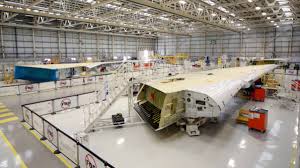
Breaking News
 Massie Introduces Bill to Get US Out of NATO
Massie Introduces Bill to Get US Out of NATO
 Somali Flag Raised Over Vermont School District
Somali Flag Raised Over Vermont School District
 "Kill Babies, Superman"? New CHILDREN'S Book Calls Abortion a "Superpower"
"Kill Babies, Superman"? New CHILDREN'S Book Calls Abortion a "Superpower"
 Gold Warning Issued as New Monetary System Takes Hold
Gold Warning Issued as New Monetary System Takes Hold
Top Tech News
 This tiny dev board is packed with features for ambitious makers
This tiny dev board is packed with features for ambitious makers
 Scientists Discover Gel to Regrow Tooth Enamel
Scientists Discover Gel to Regrow Tooth Enamel
 Vitamin C and Dandelion Root Killing Cancer Cells -- as Former CDC Director Calls for COVID-19...
Vitamin C and Dandelion Root Killing Cancer Cells -- as Former CDC Director Calls for COVID-19...
 Galactic Brain: US firm plans space-based data centers, power grid to challenge China
Galactic Brain: US firm plans space-based data centers, power grid to challenge China
 A microbial cleanup for glyphosate just earned a patent. Here's why that matters
A microbial cleanup for glyphosate just earned a patent. Here's why that matters
 Japan Breaks Internet Speed Record with 5 Million Times Faster Data Transfer
Japan Breaks Internet Speed Record with 5 Million Times Faster Data Transfer
 Advanced Propulsion Resources Part 1 of 2
Advanced Propulsion Resources Part 1 of 2
 PulsarFusion a forward-thinking UK aerospace company, is pushing the boundaries of space travel...
PulsarFusion a forward-thinking UK aerospace company, is pushing the boundaries of space travel...
 Dinky little laser box throws big-screen entertainment from inches away
Dinky little laser box throws big-screen entertainment from inches away
 'World's first' sodium-ion flashlight shines bright even at -40 ºF
'World's first' sodium-ion flashlight shines bright even at -40 ºF
Airbus is making planes lighter with technology we barely understand

The Airbus A320 is a hefty machine. Weighing in at 183,000 pounds fully loaded, the plane needs to be strong enough to withstand the constant forces of wind but light enough to be economical to operate. Every pound costs fuel: Your carry-on laptop actually costs an airline an extra 33 cents in gas, for instance, and a magazine costs a nickel.
The advances brought by decades of aeronautical engineering have more or less plateaued, which is why Airbus has partnered with the design and engineering software company Autodesk to design planes of the future in a new way. The two companies are using a tool called generative design—basically, programming software with all sorts of physical parameters and commanding it to develop a design around those rules. Generative design can do anything from shape a superstrong yet minimal chair to calculate wildly complex weight-to-strength ratios in airplane parts that a human brain couldn't consider.
So far, Airbus has used generative design to develop a 3D-printed "bionic partition" for airplane cabins that's 45% lighter yet 8% stronger than anything it's used to date. But the company is pushing further. It's now applying generative design tools to reengineer many more parts of its planes, from the vertical stabilizer (that tall fin that's on the back of a jet—now 20% lighter than ever before), to the legs of its seats, to the interior layout of the cabin, to how its factories are built for optimal production and cost-effectiveness.



